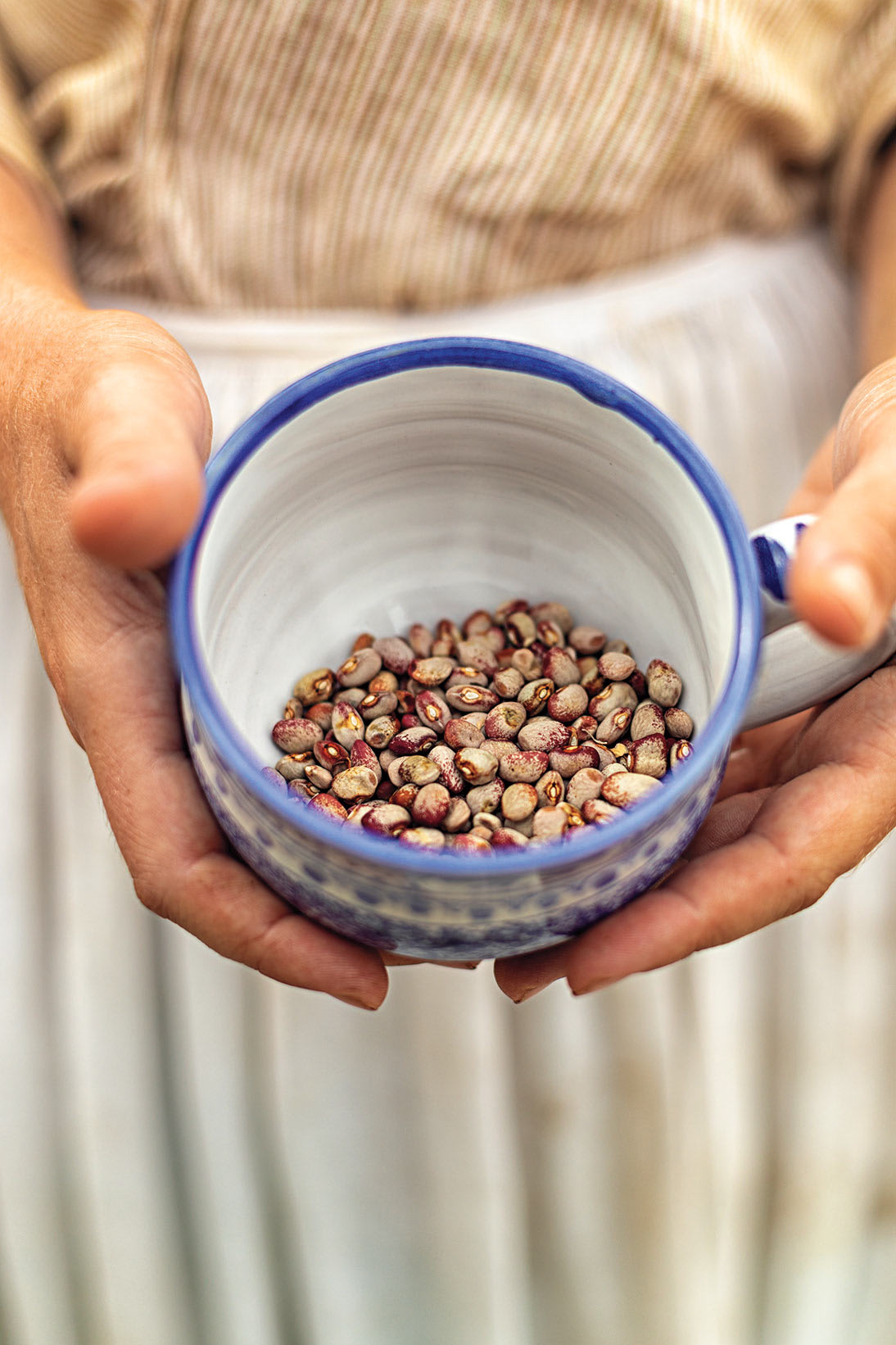“We are always happy to get vegetables from the gardens, which we pickle and preserve as well as cook,” said Frank Clark, master of the Historic Foodways trade. Eve Otmar, a historic gardener, says radishes were found in Williamsburg in the 18th century. Some were red-rooted and known as “Spanish” or “turnip” radishes. A smaller variety developed in Italy could also be found here.



Cowpeas, shown here shelled and in their native state, were brought to North America through the slave trade, says Ed Schultz, a journeyman historic farmer. Commonly known as black-eyed peas, this drought-resistant variety is called Iron Clay. It develops vines that, when planted in cornfields, can snake around the stalks.





